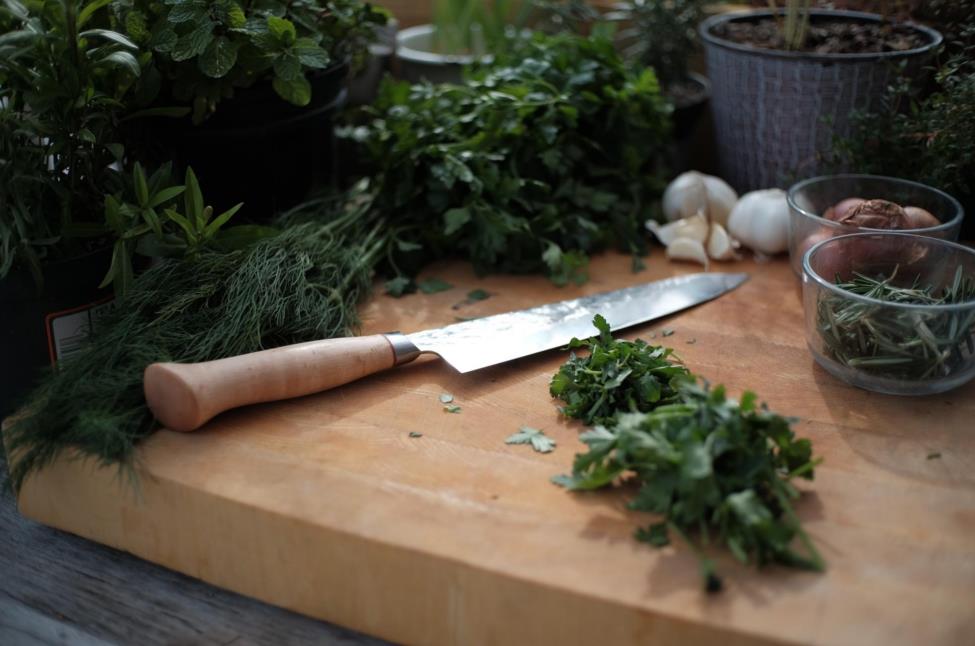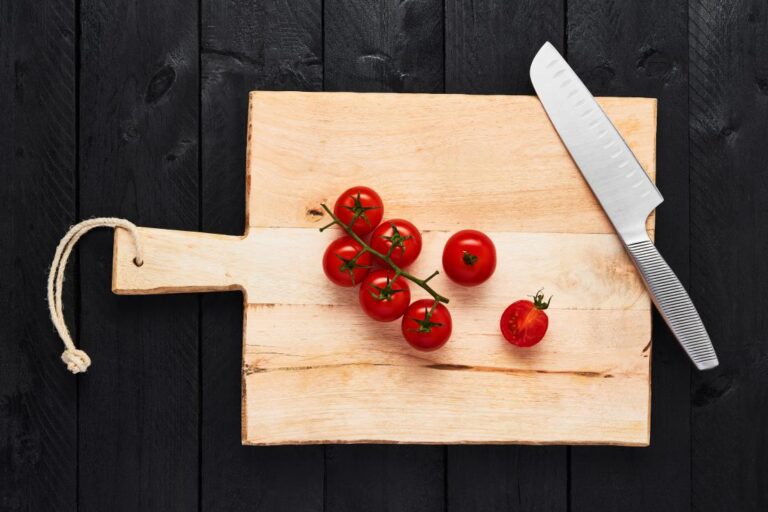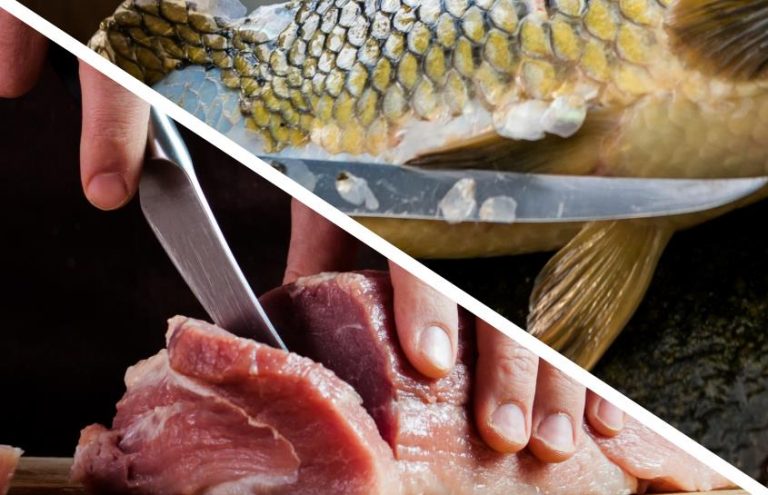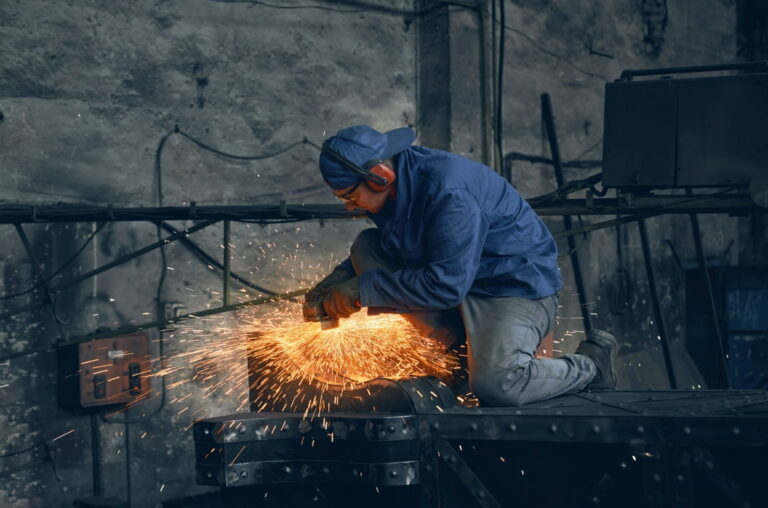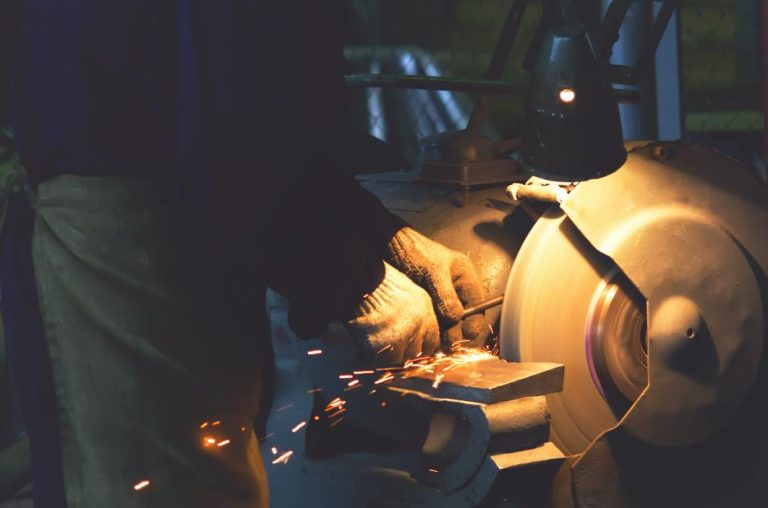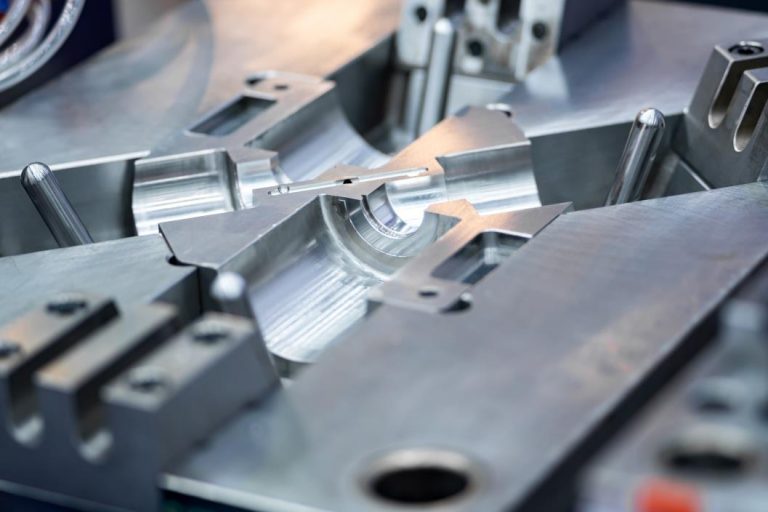Japanese dishes require the ingredients to be finely sliced, whether for sashimi, sushi, or another. These are challenging to perform with western-styled kitchen knives. That’s why the Japanese have their own crafted blades for many different purposes.
Steel plays an extremely important part in the Japanese knife. Their blades feature a thin profile made from hard steel that has extreme sharpness and edge retention. Unique knives like this require special blade materials. Just as knives are different, so are the types of steel used in Japanese blades.
The highlights of Japanese steel aren’t only for specialized kitchen knives. Many companies selling pocket knives have started utilizing them in their products. The sharp edge combined with satisfying edge retention only increases Japanese steel’s popularity.
Traditional Japanese steel: Tamahagane
Tamahagane steel takes up a big space in the history and traditional Japanese metal forging. It’s a highly valued steel with 1.00 to 1.5% carbon content, allowing it to be on par with many of today’s steel in terms of hardness.
Tamahagane requires a grueling process to manufacture in a large clay tub furnace. Tamahagane is made from satetsu, an iron sand found in Shimane, Japan. The iron sand is mixed with charcoal to add carbon and harden it.
The making of Tamahagane can take up to three days. The mixture is turned over continuously after the iron sand sinks to the bottom of the furnace, and more is constantly added. After the iron sand and charcoal becomes Tamahagane, the bright silver-colored pieces are used for forging high-quality blades.
Tamahagane is a lot like powder metallurgy steels in a way that can keeps a fine cutting edge. Today, Tamahagane steel is mainly produced in Niigata, Japan, where it’s used for making a variety of kitchen knives and katanas.
Modern Japanese steel

Metallurgy has come a long way and changed for better. However, the Japanese kitchen knives and how Japanese chefs prepare dishes using them are still the same. Because of this, Japanese knives need different types of steel than those used in western knives – more on what sets them apart down below.
Many of the features of the historical Japanese steel, Tamahagane, and modern steels used for making Japanese knives today share similarities. Here is a list of different Japanese steels, their properties, and the type of knife blades that benefit from them the most.
Buy Wholesale Knives and Start Scaling up with Us Today
Contact us and connect with a sales rep to get a free quote.
VG 10
VG-10 or V-Gold 10 has been around for more than 60 years. It is premium-grade knife steel used for making high-end kitchen knives catered for professional use. The typical hardness of VG-10 steel knives is 61 HRc. This hardness allows it to keep a fine cutting edge for long periods.
Despite its capability to keep a sharp edge after long shifts, VG-10 steel is also easy to sharpen. Using a standard whetstone, it can take a brand new, extremely sharp cutting edge in a matter of minutes. The easy sharpening is why many prefer outdoor knives made from VG-10 since they don’t get as much use as kitchen knives, making them cut for months without sharpening.
In most cases, hard steels like this aren’t as durable. This downside isn’t something users find in VG-10 steel blades. They are durable enough to withstand cutting through small bones without chipping and small pieces of wood. Still, it’s vital to use the proper knife for such tasks, whether made from VG-10 or any other steel.
VG-10 is one of the best options for making both kitchen knives and pocket knives. This steel doesn’t have any particular property that falls behind its other traits. However, many others serve better in specific characteristics. All and all, VG-10 is a jack-of-all-trades. It suits the job adequately without performing incredibly well or badly in specific areas.
Pros
- Good sharpness.
- Easy to sharpen.
- Durable for most tasks.
- Moderate corrosion resistance.
Cons
- All-rounder steel for knives, there are options performing better than VG-10 in every field.
ZDP 189

ZDP-189 steel is one of the go-to steel for Japanese knives when hardness is required. The most apparent highlight of this steel is the 65 HRc and above hardness. Through a rather complex and multi-step quenching process using dry ice or liquid nitrogen, ZDP-189 steel can reach up to a spectacular 70 HRc.
With the hardness of ZDP-189, it comes as no surprise that it’s able to stay sharp for long periods. It’s a powder metallurgy steel that has a very fine grain structure. This allows ZDP-189 steel to obtain a very sharp cutting edge and sustain it for incredibly long periods.
Unlike VG-10 or other softer steel, it isn’t as tough as expected. Using ZDP-189 steel knives with force can chip the blade’s edge easily. Because of the steel’s underperforming toughness, ZDP-189 is primarily used for making slicing knives, like Sujihiki and Kiritsuke.
Overall, ZDP-189 has excellent wear resistance, edge retention, and sharpness, but its corrosion resistance, ease of sharpening, and toughness fall behind them. ZDP-189 isn’t stainless steel that resists rusting despite the 20% chromium in the composition. It’s best to treat it as if ZDP-189 is regular high carbon steel.
Pros
- Incredible edge retention.
- Great wear resistance.
Cons
- Difficult to sharpen.
- It doesn’t resist corrosion well.
- Poor toughness.
AUS 8
When there’s a need for tough steel that’s just as able to stay sharp, AUS-8 Japanese steel is one of the first options knifemakers consider. It provides great toughness and edge retention, suitable for forging a wide range of blades.
AUS-8 steel’s hardness is below its big brother, AUS-10, due to less carbon content, but tougher. Most AUS-8 steel knife blades are between 58 and 59 HRc hard. This hardness achieves good edge retention but may not impress someone working in a fast-paced environment. However, AUS-8 steel’s edge retention is more than suitable for the average user. Take a home cook or someone who simply needs a good quality pocket knife, – AUS-8 will satisfy.
The two primary areas AUS-8 shines are toughness and corrosion resistance. The high present chromium amounts and the added nickel improve its toughness incredibly well. We can’t say the same for the wear resistance of AUS-8 knives. Over time, the scratches will take their shine away and need polishing to bring it back.
Today, we can see AUS-8 steel used for making all-purpose Japanese knives like Gyuto and blades that require extra toughness, like Honesuki. AUS-8 Japanese steel’s ability to resist corrosion acts as a bonus to all the features mentioned above. Other than kitchen knives, AUS-8 makes great outdoor knives where corrosion resistance and durability are needed.
AUS-8 Japanese steel is one of the most popular on this list. It found its place in many brands’ knife blades. It has properties that fulfill most people’s needs, whether for kitchen or outdoor use.
Pros
- Adequate edge retention.
- Incredible corrosion resistance.
- Great toughness.
Cons
- Sharpening isn’t an easy task, but not too hard either.
- Often fails to resist scratches.
SG 2 (R2)
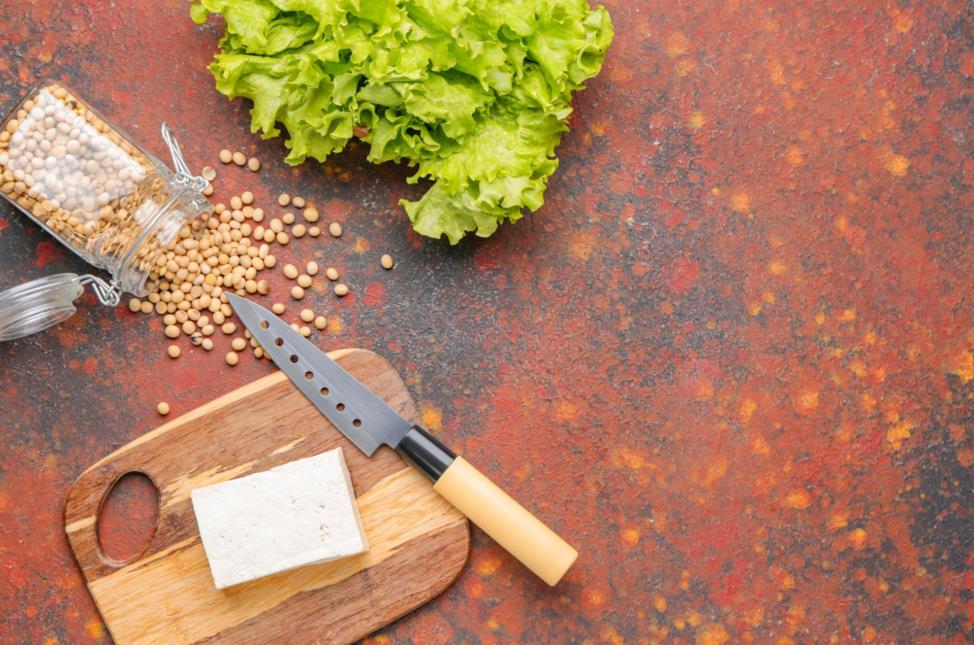
SG2, also known as R2 or Super Gold 2, is high carbon steel with impressive hardness. It can reach up to 64 HRc, providing superb edge retention and wear resistance.
This hardness comes with an incredibly sharp edge ahead of many other types of steel. SG2 is powdered stainless steel that resists corrosion well. Compared to other steel around this hardness, for example, ZDP-189 steel, SG2 has significantly fair corrosion resistance.
There aren’t many pocket knives made from this steel. SG2 is a highly reputable choice for high-end Japanese kitchen knives, especially chef’s knives.
The ability to maintain its sharp cutting edge for hours on end makes SG2 steel favorable to professional chefs. The price also reflects this, as knives made from SG2 steel tend to be quite expensive. The user gets a sustainable incredible sharp edge with amazing wear resistance in return and reasonable corrosion resistance.
Nevertheless, not everything is perfect about SG2 steel knives. Although SG2 blades take a great edge, they are challenging to sharpen. They are also susceptible to chipping. If heat-treated incorrectly, SG2 steel knives can chip almost immediately when cutting anything dense.
The brittleness is the primary reason why it isn’t as preferred for pocket knives. Considering what people cut with pocket knives, from ropes to small pieces of wood, it’s understandable why knifemakers stick with high-end Japanese kitchen knives.
Pros
- Razor-sharp edge.
- Excellent edge retention.
- Resist corrosion well.
Cons
- Difficult to sharpen.
- It isn’t the toughest, making it less durable.
ATS 34
ATS-34 is perhaps the most commonly used Japanese steel for pocket knives. A wide range of tactical, survival, and EDC knives are made from ATS-34. It has sufficient edge retention, toughness, wear resistance, and corrosion resistance.
The hardness of ATS-34 Japanese steel is betweem 60 and 61 HRc. This hardness provides its users with adequate edge retention. The wear resistance of ATS-34 is just as good and ensures a scratch-free appearance. However, like all knives, it will get marks with use over time.
ATS-34 has a fair balance between wear resistance and toughness. Most knife steels tend to have good wear resistance and poor toughness and vice versa. ATS-34 steel’s wear resistance and toughness are on pleasing levels without sacrificing either one over the other.
Resisting rust and oxidation is another property of ATS-34 that’s acceptable. Although it’s not a type of steel that won’t ever rust, it does a good job. ATS-34 resists corrosion, particularly in saltwater better than most stainless steel. This trait makes ATS-34 steel knives suitable for divers and fishers.
As for sharpening, ATS-34 gives an easy stretch. At the same time, ATS-34 steel has large carbides. Before giving the knife a new edge, considerable amounts of material need to be shed from it. Although this may prolong the sharpening sessions, ATS-34 isn’t challenging to sharpen.
All these traits make the ATS-34 a popular choice among knife enthusiasts that want something simple yet effective. Additionally, ATS-34 Japanese steel is interchangeable with 154CM steel. If the properties of ATS-34 are ideal for a blade but it requires better sharpness, CPM154, the powder metallurgy version, is the most reasonable substitute.
Pros
- Balanced wear resistance and toughness.
- Good corrosion resistance.
- Easy sharpening.
Cons
- Not as sharp as other Japanese steel.
Shirogami
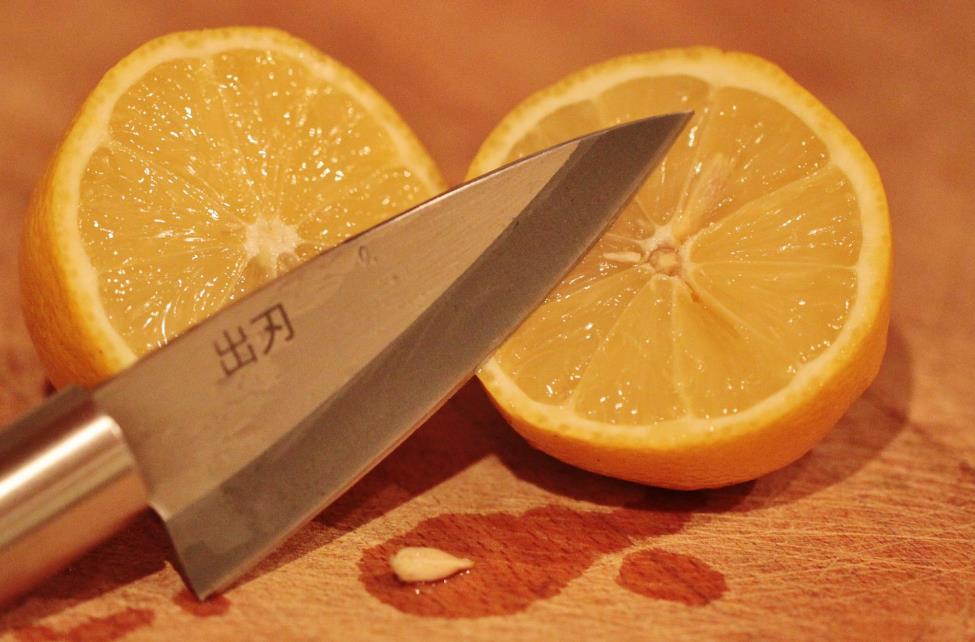
Remember tamahagane? Also known as white steel, Shirogami is the closest Japanese steel to the traditional tamahagane. It has very few impurities, and Japanese chefs regard it as the best steel for Japanese knives. While that’s debatable as every cook has their own preferences, it comes as no surprise that Japanese knives made from Shirogami are one of the costliest.
However, there isn’t a single type of Shirogami. There are three types based on carbon content.
Shirogami #1 has the most carbon content, between 1.20 and 1.40%. Therefore, it’s the hardest at 61 to 64 HRc and the sharpest and keeps it that way for incredibly long. It’s also very easy to sharpen. Given its ability to keep a sharp edge for long, it can make the user forget about the existence of a whetstone altogether.
It isn’t stainless and should be maintained accordingly. Without upkeep, the knives made from Shirogami #1 will rust quickly and deteriorate the blade. As expected, it’s also brittle, and using it to cut dense ingredients can chip the edge. Shirogami #1 is better suited for fine slicing, perfect for fulfilling the needs of Japanese chefs.
Shirogami #2 has 1.05 to 1.15% carbon with an average hardness of 61 HRc. Its properties are similar to Shirogami #2 but accomplishes them to a lesser degree. While Shirogami #1 doesn’t appeal to an average user as much due to its high price, Shirogami #2 knives are more affordable at around $100 to $200.
Shirogami #3 has the least amount of carbon at 0.80 to 0.90%. It isn’t as hard as the first two but much tougher. Although all three are high carbon steels, Shirogami #3 tends to resist corrosion better.
It has poorer edge retention than the other versions but maintains a similar level of sharpness. While we can match Shirogami #1 and #2 with other premium-grade high carbon steels, Shirogami #3 often fails to deliver the same edge retention.
The following pros and cons only apply to Shirogami #1 and #2.
Pros
- Excellent edge retention.
- Incredibly sharp edge.
- Easy to sharpen.
Cons
- Inadequate corrosion resistance.
- Brittle steel that can chip following improper use.
- Expensive.
Aogami
Aogami, also known as blue steel, is pretty much the same as Shirogami but with chromium and tungsten added. However, chromium isn’t added for corrosion resistance. Chromium in Aogami steel is found in tiny amounts at just 0.30 to 0.50 chromium. This level of chromium does more to steel’s wear resistance and hardness than corrosion resistance.
1.50 to 2.00% tungsten increases Aogami’s toughness, corrosion resistance, and overall strength, making it resist chipping better than Shirogami. Aogami comes in varieties, like Shirogami.
Aogami #1 is the hardest, with 1.25 to 1.35% carbon content. In addition to the carbon, chromium, and tungsten, it has an average of 0.15% silicon and 0.25% manganese. Since Aogami and Shirogami are the same steel with minor differences, much of the things discussed about Shirogami #1 apply to Aogami #1.
However, Aogami #1 is much tougher than Shirogami #1. It isn’t as hard; thus, less brittle. Additionally, it’s also more difficult to sharpen than Shirogami due to the added tungsten.
Aogami #2 is harder than Aogami #1, with an average hardness between 63 and 65 HRc. Although it has less carbon than Aogami #1 at 1.05 to 1.15%, tungsten and chromium take up the emptied space the less carbon leaves and hardens the steel furtherracteristics that, when together, produce the ultimate cutting tool for precision tasks.
The higher hardness is surely favorable for some, but this makes Aogami #2 less special. Aogami #2 is very comparable to ZDP-189 steel at this point than Aogami #1. Due to this, Aogami #2 is more affordable, and it’s not uncommon to see knives made from this steel priced at less than $100.
Aogami Super
Lastly, there is the Blue Super Steel or Aogami Super. This steel has 0.05 to 0.15% more carbon and 0.50 to 1.00% more tungsten than Aogami #1 and between 0.30 and 0.50% vanadium.
Aogami Super is slightly softer than Aogami #2 but tends to keep a sharper edge for longer. Vanadium contributes to better edge retention, but makes it more challenging to sharpen. Nonetheless, Japanese chefs still highly favor Aogami Super steel for kitchen knives – even more than Augami #1 and #2.
Pros
- Slightly tougher than Shirogami.
- Excellent edge retention
- Incredible sharpness.
- Aogami #1 and #2 are easy to sharpen.
Cons
- Inadequate corrosion resistance.
- Aogami #2 and Super are brittle.
- Expensive.
- Aogami Super is difficult to sharpen.
Features of Japanese steel
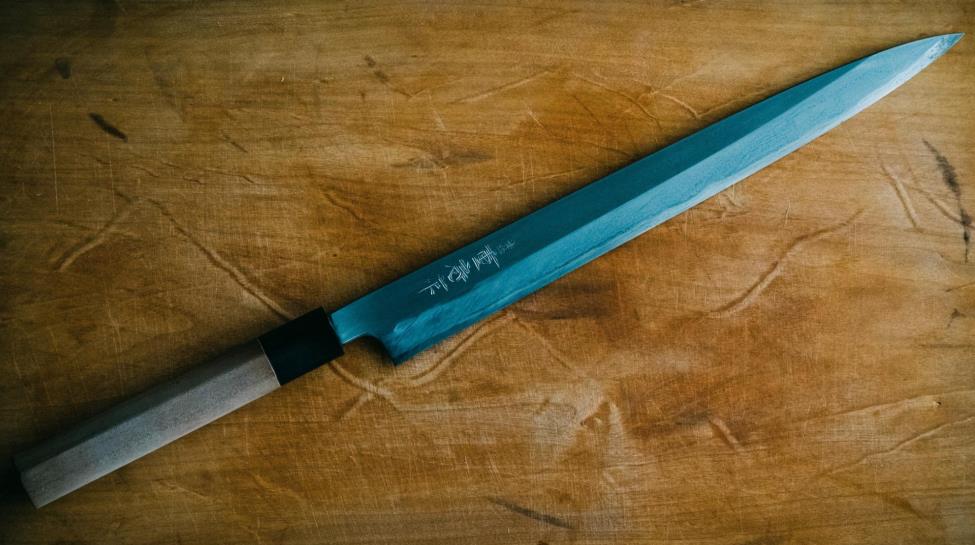
There are two primary qualities in Japanese steel users favor: sharpness and edge retention. These two are different characteristics that, when together, produce the ultimate cutting tool for precision tasks.
Knife blades made from Japanese steel in traditional cutlery don’t need to be hard just for edge retention and sharpness. Japanese kitchen knives usually feature a thin blade profile that should cut through ingredients effortlessly. With soft steel, achieving this isn’t likely.
Additionally, the harder steel gives the blade more weight. Japanese kitchen knives mostly have a balance forward towards the tip. Although reducing the mass from the tang contributes to this, the forward balance becomes more apparent with a blade made from hard steel.
Since most steels have balance to them where one trait it’s good at tends to affect another negatively, this can be seen in many Japanese steels. Because hardness, edge retention, and sharpness are the key focuses of Japanese steel, corrosion resistance and toughness are often overlooked.
However, this isn’t to say that all Japanese steel doesn’t have enough corrosion resistance or toughness. ATS-34, VG-10, and AUS-8 provide adequate corrosion resistance with proper edge retention, sharpness, and toughness.
Corrosion resistance and toughness are usually not as critical when the knife needs to have the primary characteristics of Japanese kitchen knives. ZDP-189, Shirogami, and Aogami are great examples of this.
Because the blade’s features are affected largely by the steel, knifemakers use different steels for different users. For example, ZDP-189 or Shirogami #1 isn’t good knife steel for home cooks, just as AUS-8 or ATS-34 isn’t suitable for professionals.
Overall, Japanese steel is usually hard with great wear resistance but tends to have low toughness and corrosion resistance. These traits found in Japanese steel are suitable for specialized Japanese kitchen knives and traditional swords like katanas.
Japanese steel vs. western steel
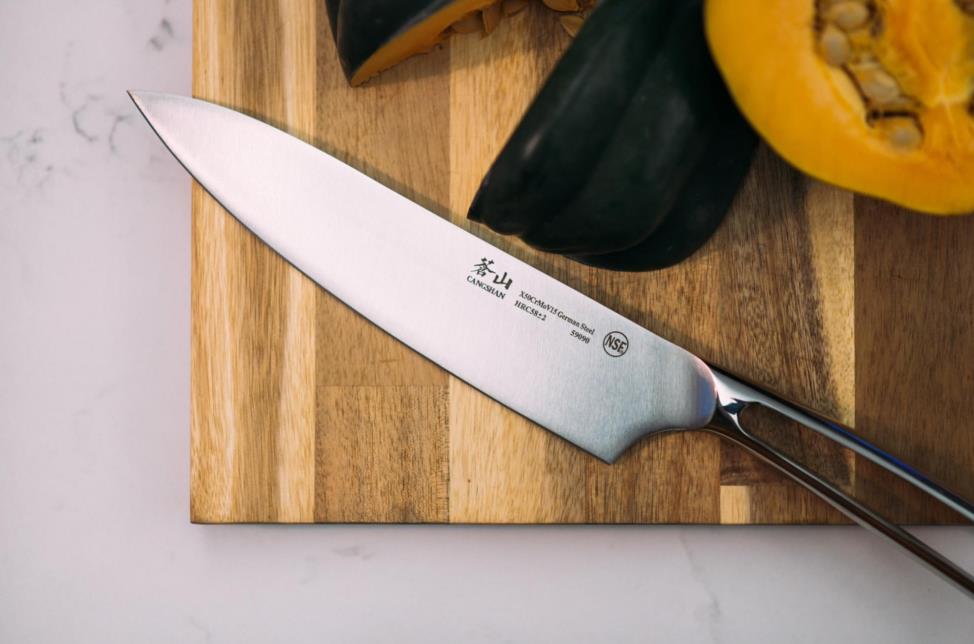
In many ways, western steel is the opposite of Japanese steel. They value corrosion resistance and toughness more than others. This is mainly due to tasks performed with the knife, as the food preparation doesn’t require as much fine slicing or intricate tasks. As long as it cuts through a variety of ingredients with ease, it gets the job done.
This difference in use is one of the reasons why western chef’s knives are used across almost every task, from cutting through bones to fileting to slicingn the Japanese steels have.
Although dedicated knives for each task make food preparation easier, western chef’s knives are usually more adaptable than Japanese knives. Of course, this versatility requires tough and durable steel that can absorb impact.
Therefore, western knife steels are usually more durable and corrosion-resistant than their Japanese counterparts. They don’t have the sharpness and edge retention the Japanese steels have but do an excellent job in these areas.
Overall, it’s not that either one is superior to another. It comes down to the type of knife, tasks performed with that knife, and the user’s needs. It’s vital for anyone selling knives to understand the needs of their target customers.
At LeeKnives, we utilize a wide variety of different steels to achieve optimal results with our partners. Whether dropshipping, wholesaling, or want to create your own knife brand, we can help by providing OEM and ODM services with your brand’s logo and name. We ship globally with fulfillment centers in China and the US for the fastest reach. Come contact us now for a free quote.
